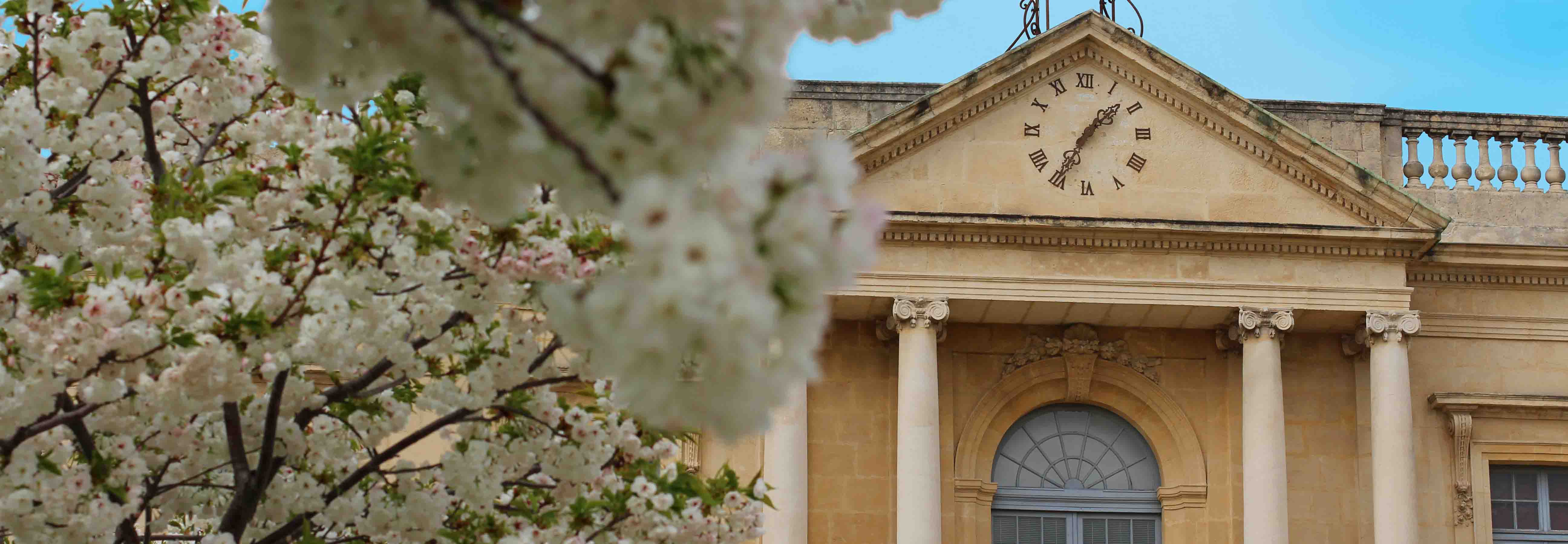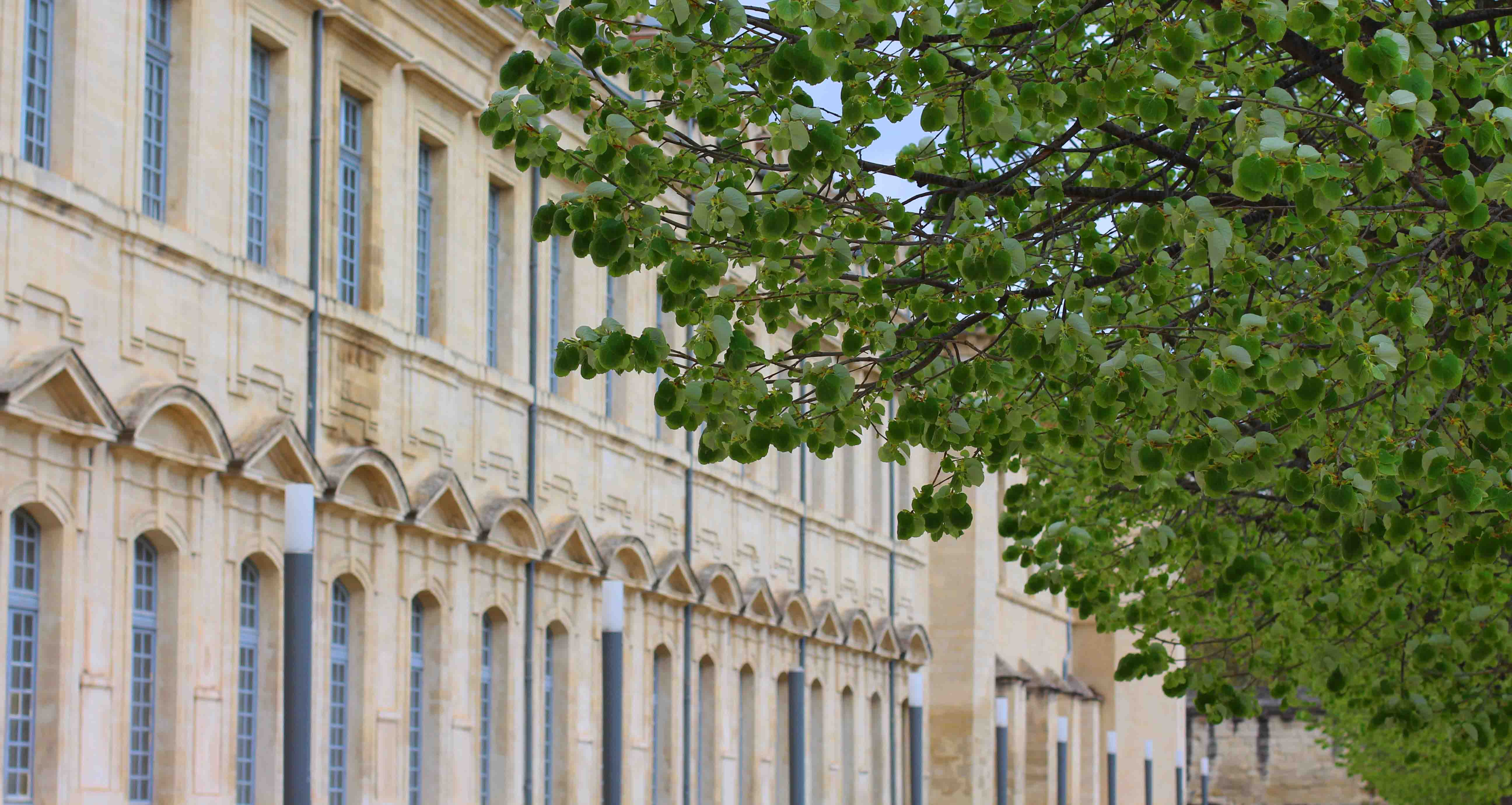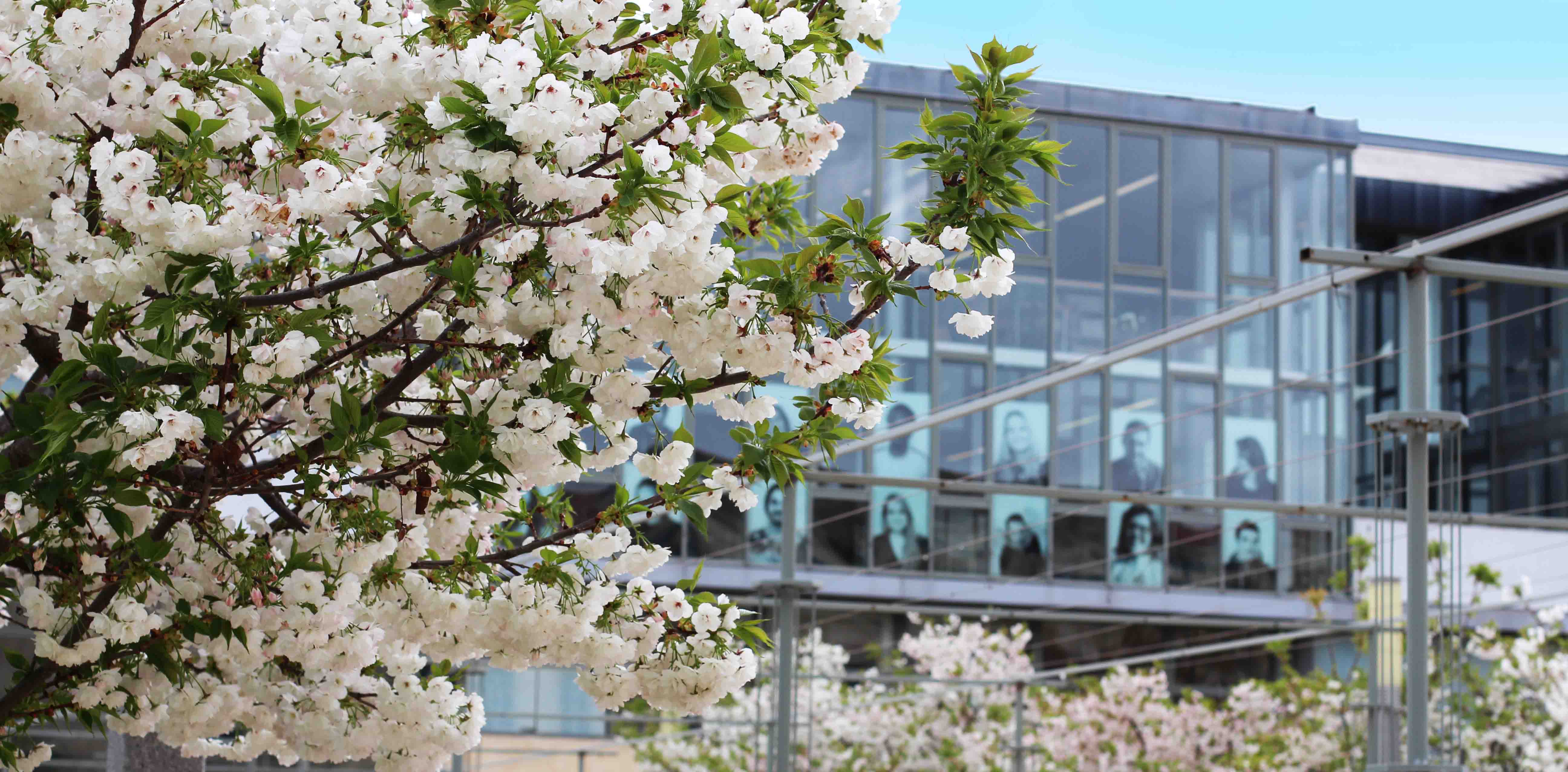The Hannah Arendt Campus
Avignon and the University: 700 years of history
To compete with the creation of the Sorbonne, considered too close to the French royal power, Pope Boniface VIII founded the University of Avignon on 2 July 1303. It developed with the presence of the popes in Avignon, competing with the universities of Montpellier and Aix-en-Provence, to the point of welcoming 17,000 students. Then, after the return of the popes to Rome, the University, which focused on law, lost its prestige to the Jesuits and the seminaries.
During the French Revolution, the city was annexed to France and the university was abolished, like all French universities, by the decree of 15 September 1793.
Avignon became a university again in 1963, with the opening of a Centre for Higher Scientific Education, followed the following year by a Centre for Higher Literary Education. The two entities were respectively dependent on the Faculty of Sciences and the Faculty of Letters of Aix-Marseille.

In 1972, the two teaching and research units were merged into a university centre, which became a full university (independent of the University of Aix-Marseille) on 17 July 1984 under the name of the University of Avignon and the Pays de Vaucluse. At that time, three UFR (Humanities, Exact and Natural Sciences, Applied Sciences and Languages) shared 2,000 students. The fourth pole, the legal one, was created from the creation of a Faculty of Law in place of an annex of the University of Aix Marseille III. This was followed by a University Institute of Technology in 1990 and a Professionalized University Institute in 1992.
In order to prevent students from being spread too thinly (there were 10 sites in 1991) and to revitalise the city centre, it was decided to move the various courses to a single site, which would be able to accommodate community facilities (notably the university library and restaurant). The development of the former Sainte Marthe hospital was launched, and was completed at the start of the 1997 academic year.
History and architecture of the former Saint Martha's Hospital
Founded in 1354 with the donation of ten thousand gold florins by the knight Bernard Rascas, marshal of justice, and placed under the patronage of Saint Martha, the hospital was municipalized in 1482 by the cardinal-legate Julien de la Rovère. A series of construction sites spread out between 1667 and 1830 allowed the elaboration of a sumptuous facade of one hundred and seventy-five meters long. Jean Péru, who worked on it between 1689 and 1693, imposed the design: narrow, tight bays with two levels of windows, topped by a picturesque dormer window. On this model, J.-B. Franque built the eastern wing between 1743 and 1745, then, with the help of his son François, he built the portico with the powerful columns of the central pavilion.
The façade
Jean Péru (1656-1723) was already well known when he was chosen for a new building campaign. From the façade of Sainte Marthe, he completed only part of the west wing (1689-1693), Jean-Baptiste Franque continued the work (1743-1745), using the same design for the right-hand side, and the work of 1830 extended the west wing begun by Péru. The whole is remarkably homogeneous, despite the different hands involved in its construction.
The façade is 175 metres long. Its elevation comprises two visible levels, a very high ground floor and a single storey above, barely less high, all of which is highlighted by blind dormer windows. The ornamentation on the first floor features windows topped alternately by curvilinear and triangular pediments. The dormer windows, highlighted by a highly dynamic circular arch at the ends, crown the whole. They are as numerous as the windows. The astonishing length of the façade, the curvilinear rhythm contrasting with the triangular rhythm of the pediments, enriched by the rounded note of the dormers, creates a skilful interplay of curves, a dynamic, a movement in keeping with the taste for Italianate eloquence. This interplay of rigour and movement culminates in the portico at the front of the Borde staircase pavilion.
Jean-Baptiste Franque, with his son François, drew up the plans and specifications (1746). The portico stands out against a central, projecting body, with the columns of the two superimposed orders jutting out for a moment against the astonishing horizontality. A large triangular pediment adds the finishing touch to this immense façade, the largest in Avignon at the time.

The great hall of the northern building
Jean-André Borde and François d'Elbène used the design by Paul de Royers de la Valfenière, who died in 1667, to create the central pavilion housing the grand staircase. After a vast arcaded vestibule, the colossal square staircase is laid out in perfect rhythm. Although the scale of the proportions gives an impression of balance and sobriety, there is a Baroque tendency towards elegance throughout.
On either side of the hall, in the alcoves, stand the statues of Bernard de Rascas, founder of the Sainte Marthe hospital (left) and Bénézet. According to legend, in 1177, Bénézet, a young shepherd from the Ardèche, heard the voice of Christ ordering him to go and build a bridge over the Rhône. Guided by an angel, he arrived on the right bank of the Rhône and was taken across by a boatman to whom he gave the last three coins he had. Bénézet then announced his mission to the bishop of Avignon, who took him for a simpleton and sent him to the judge.
To put him to the test, Benezet pointed to a huge stone and said that if he could carry it, he believed he could build the bridge. Bénézet lifted the stone and placed it in the river at the start of the future bridge. Immediately, alms poured in and it was decided to build the bridge. Although he was never officially canonised, Bénézet was described as a saint from the early 13th century and his cult spread, his iconography most often depicting him with the stone on his shoulder.
The southern building: a response to the architecture of the former Saint Martha's Hospital
The metamorphosis of the Sainte Marthe hospital into a university is being carried out by the Sauget-Girard group.
The 16,000 square metres of refurbishment work will not be enough to accommodate 7,000 students, so a new build of 14,000 square metres has been budgeted. Jean-Pierre Buffi and G. Varnitzky were the architects. Their aim was to provide a contemporary response to the building and its late 17th-century façade. The new building will not be designed as an "annex to the existing historic building, but as part of a complex and balanced arrangement in which the two parts create a very high-level architectural confrontation".
The same long façade is also part of a two-stage vertical-horizontal design. The liveliness of this façade is underlined by the ground floor base in light-coloured stone, punctuated by openings in the style of Sainte Marthe, giving light to the lecture theatres and the cafeteria. On the two upper floors, glass is omnipresent. It introduces a play of mirrors reflecting the nuances of the Provençal light and the hundred-year-old plane trees. This glass wall allows light to flood into this immense vessel, the library. As in the Hôtel-Dieu, the hall is the heart of the building. It articulates the spaces and its predominantly curved shape, in contrast to the vertical and horizontal lines of the building's other main features, reflects its role as a place of passage and meeting. The two flights of stairs on four levels intersect each other in a fine harmony of counter-curves. Are these volumes and lines not reminiscent of Baroque architecture?
In response to the interior courtyards that punctuate the old building, the new one is punctuated by terraces that are intended to be 'lounges' for reading outside, both to the north and to the south. Between the two buildings, the architects have preserved a "garden square", where mineral and vegetal elements welcome those who bring this university to life. This architectural site, with its rich past and promising future, is a clear response to the interplay of styles and periods.
The Culture, Heritage and Digital Societies Institute (CPSN) comprises 8 teaching and research centres (CER)
- History (Manager: Benjamin Landais)
- Geography and planning (Manager: Guilhem Boulay)
- Culture and communication (Manager: Yannick Hascoet)
- Intercultural studies and creation (Manager: Florence Belingard)
- Theatre, literature(s), language(s) (Manager: Marianne Beauviche)
- Law (Manager: Bérengère Gleize-Perrouty)
- Social sciences, political science, economics and management (Manager: Ouassim Hamzaoui)
- Applied foreign languages (Manager: Xavier Calmettes)

Updated on 17 June 2025